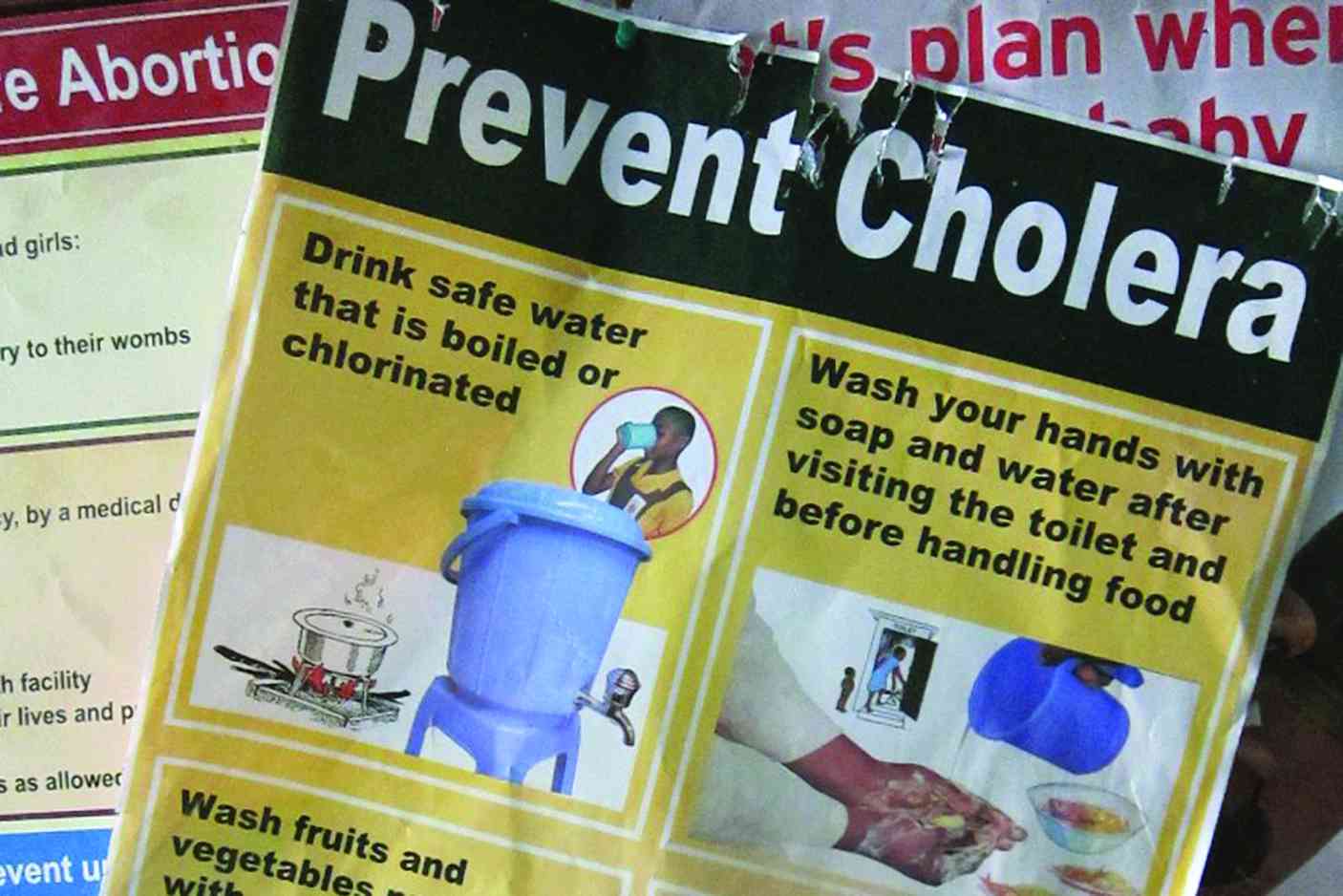
FORTY-EIGHT-year of Charles Mafiro has lived in Chegutu — the farming and mineral-rich town about 130 kilometres southwest of Harare — for 20 years.
But throughout the two decades, he has lived in constant fear of disease outbreaks, following the deterioration of sanitary conditions.
Since a devastating cholera outbreak killed 4 288 people in 100 000 infections between 2008 and 2009, sporadic epidemics have been reported in the town of 66 260 residents, who say the experience was horrifying.
Zimbabwe’s most recent outbreak was first reported on February 12, with daily cases rising by May, forcing organisations like the United Nations Children’s Fund to spring into action, reaching out to three million people with lifesaving messaging on hygiene promotion, including those in flashpoints like Chegutu.
Burst sewage pipes and the non-collection of refuse in Zimbabwe’s urban settlements have bred healthy conditions for epidemics, and towns like Chegutu have been affected by a decline in revenue inflows, according to officials.
Last week, Mafiro said he was worried that outbreaks were continuing with little action from authorities to prevent one of the most dangerous diseases.
“Cholera cases are a constant threat to the people of Chegutu,” Mafiro told the Zimbabwe Independent.
“Since the outbreaks of 2008 and 2009, we have experienced many more in this town.”
- Mavhunga puts DeMbare into Chibuku quarterfinals
- Bulls to charge into Zimbabwe gold stocks
- Ndiraya concerned as goals dry up
- Letters: How solar power is transforming African farms
Keep Reading
His sentiments were echoed by Isabel Chandiwana, a vegetable vendor, who said at one point, she also contracted cholera.
Chandiwana explained the horrors that confront those affected by Cholera, saying it was an experience that she would rather quickly forget. But Patience Thule, another resident, said until Chegutu addressed running water shortages and the sewerage management crisis, which is also experienced in many of Zimbabwe’s urban communities, the cholera threat will remain.
For now, however, there appears to be action from both Chegutu municipality and central government, with water and sewer reticulation systems undergoing repairs.
Still, Thule told the Independent that council should move with speed to complete the ongoing sanitation programmes.
“We have seen what the Chegutu municipality has done to improve water and sewer reticulation in the town. But we hope these projects can be completed ahead of the rainy season,” she said.
According to Ngonidzashe Muzanenhamo, acting public relations and communications officer for Chegutu municipality, the improvement of water and sewer reticulation infrastructure was a top priority, as the town battles to fend off the cholera threat that has continued to haunt Chegutu.
Official statistics indicate that between February and April this year, Chegutu recorded 579 suspected cholera cases, with 102 confirmed.
Nine people died.
The outbreak came only two years after the Covid–19 outbreak, which overstretched government budgets worldwide between 2020 and 2022, leaving many authorities unable to fund other health crises.
Muzanenhamo said the local authority deployed funding released under the devolution to upgrade roads, water and sewer systems.
“So far, we have received close to US$3,7 million from government to provide clean water to wards that have been affected by the cholera outbreak,” Muzanenhamo said.
“The funding has been targeted for road construction, maintenance and rehabilitation. We have also been working on improving social services in the town.”
About 11,7 kilometres of the sewer network have been rehabilitated in eight of Chegutu’s wards, with new pipes installed.
Under the programme, a further 14,3km are set to be repaired.
The project is also being bankrolled by ZimFund, a multi-donor trust fund,which was created by government in 2010 and is being managed by the African Development Bank. Under another project being funded by the Public Sector Investment Programme, the rehabilitation of two kilometres of potable water pumping systems has been targeted.
“We are also engaged in the rehabilitation of the ZRP and Chakari Tower Booster Pump Stations, including the installation of five pump sets and the separation of outlet and inlet pipes at Chakari Booster Pump Station,” he said.
Muzanenhamo said the town was also rehabilitating the 7,3 km water network in Wards 2, 8 and 9 to improve water provision for residents.
“We would also want to improve our revenue collection to improve funding for these projects, hence the installation of 3 000 post-paid domestic water meters in Wards 7, 11, 10, 2 and 8,” he said.
“We have so far completed about 54% of the project with 1 544 water meters having been installed. However, financial constraints are affecting progress.”
Chegutu town,in Mashonaland West province, is largely agro-based with some of its residents employed by large mining companies in the province.











